4 September
On Wednesday 1 September, Fr. Miguel, Ignacio, and Eduardo traveled from Choluteca, Honduras to San Jose, Costa Rica. If you were able to read my last post, you know that the “simple” journey took about 22 hours when all was said and done. Thankfully, they still had a few days to rest and recover before they could resume their trek through Costa Rica. There were lots of chores to do as well, such as laundry and catching up with email. Some things don’t change, no matter where you are!
The team has been staying with relatives of Fr. Miguel. One of the many things their hosts have done for the team was showing them around this region of Costa Rica.
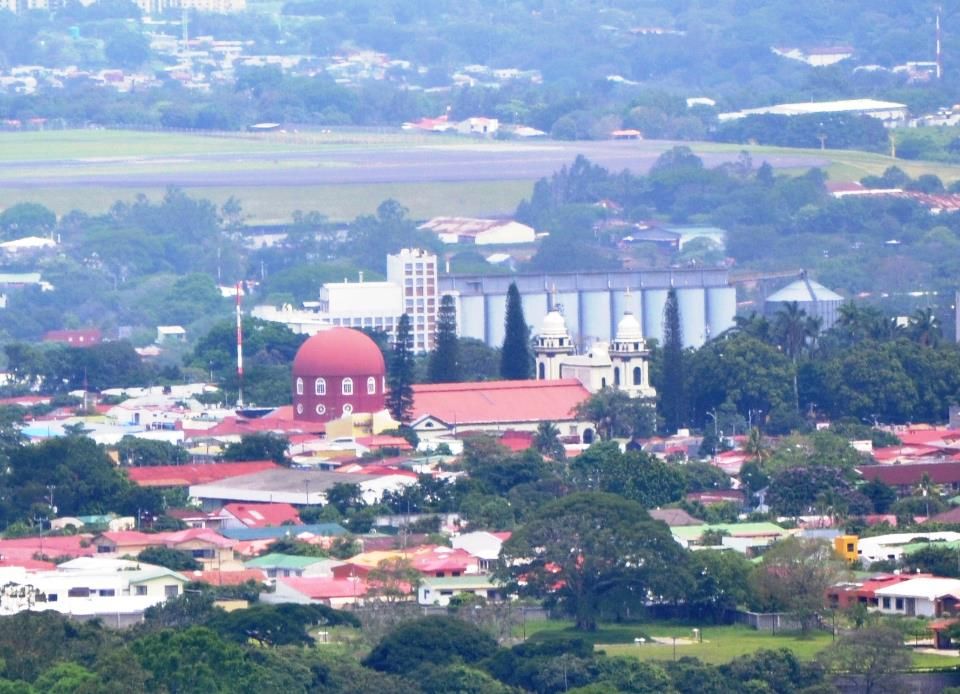
One of the memorable places the team has been able to visit is the city of Alajuela, Costa Rica, a modern city of about 43,000, located roughly 10 miles northwest of the capital of San José. Alajuela and its surroundings are famed for having the best weather in the world!
Although export of agricultural products has historically provided the backbone of the economy of this region of Costa Rica, in more recent years technology and heavy industry companies have invested in Alajuela. Many of these companies are dedicated to the manufacture of medical devices.
Alajuela is also an important transport hub, providing the main connection between the capital city of San José and the rest of northwestern Costa Rica. Central America’s second busiest airport, Juan Santamaria International Airport, is located less than two miles from the city center and is the airport into which the team flew to reach Costa Rica. (Isn’t it ironic that, in the city known for the best weather in the world, their plane couldn’t land because of bad weather? ?)
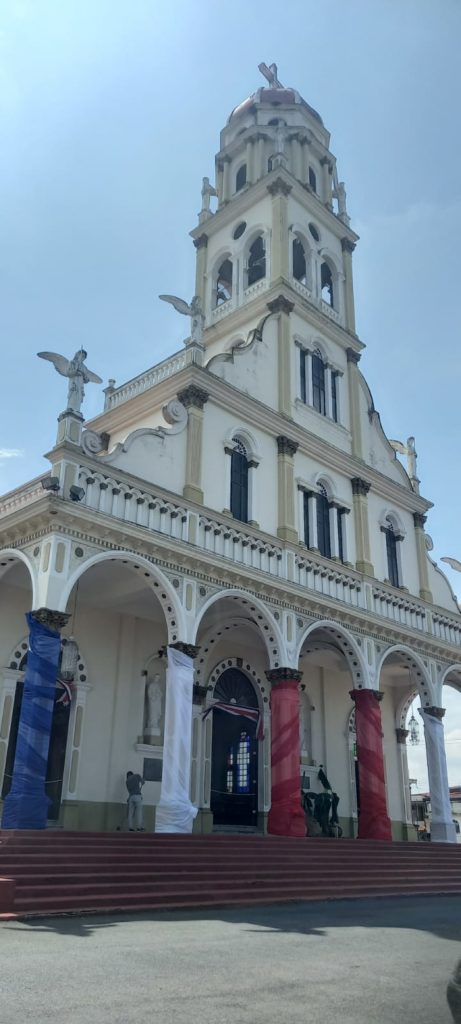
Alajuela has a few significant churches. Two of them were visited by Fr. Miguel and the team. The first was Santo Cristo de Esquipulas de la Agonía (The Church of Christ in Agony).
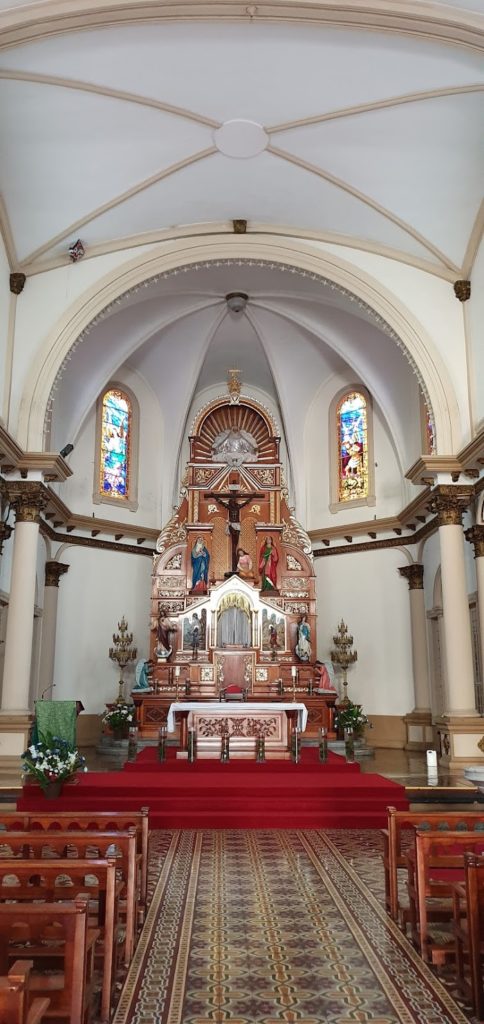
This church was so named because of the large crucifix over the altar, a replica of the crucifix housed in the Cathedral Basilica of Esquipulas in Esquipulas, Guatemala.
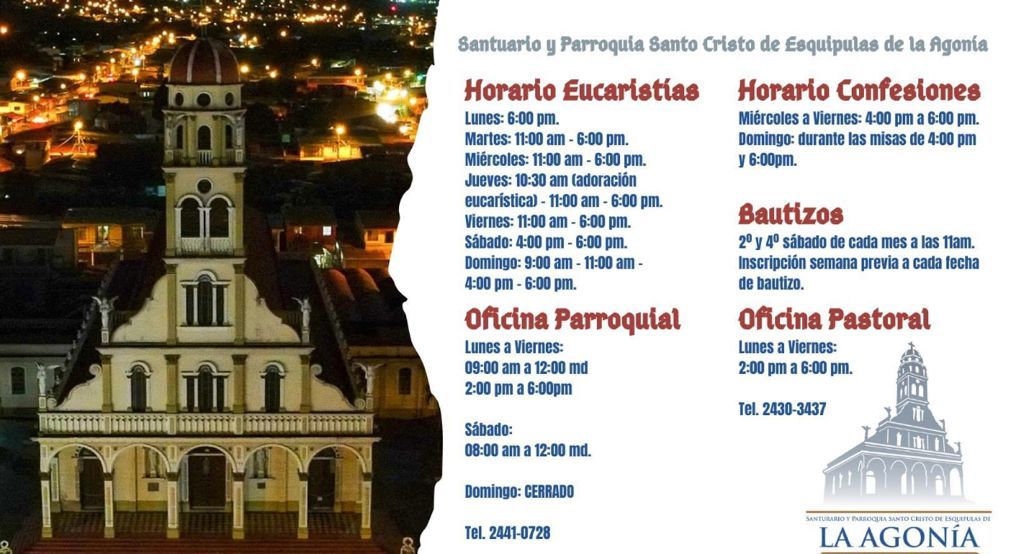
Although the church is not large, it is home to a very active parish.
A smaller prayer chapel once stood on the site. The current church was built between 1935 and 1940 to provide for the growing population. Its interior houses a series of beautiful stained glass windows and other decorative elements that make La AgonÍa a beautiful place for quiet prayer.
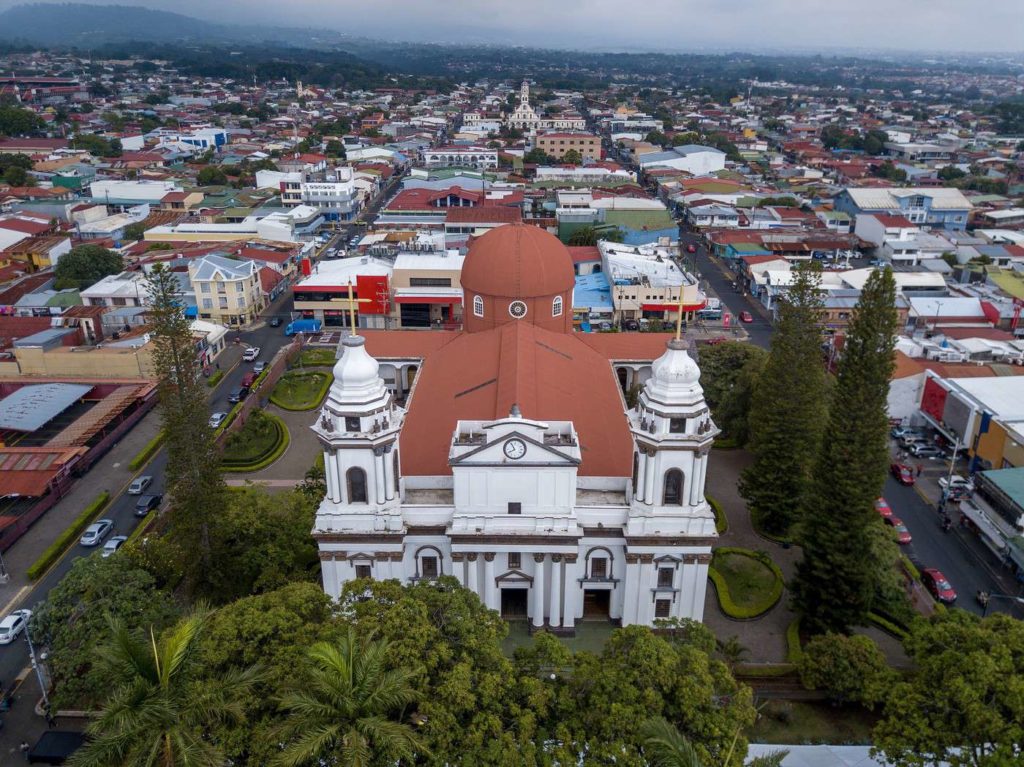
The other church Fr. Miguel and the team visited was Alajuela Cathedral, also known as Catedral de Nuestra Señora del Pilar (Cathedral of Our Lady of the Pillar).
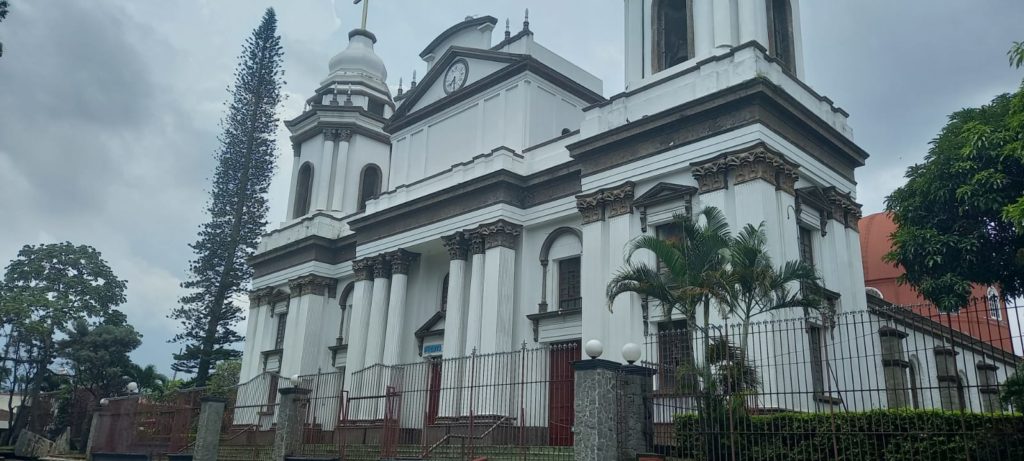
The cathedral began as a simple public prayer building in 1782. Construction was completed in 1863, and it was declared a cathedral in 1921.
The red dome on the back of the cathedral is visible from all over town and is one of Alajuela’s major landmarks.
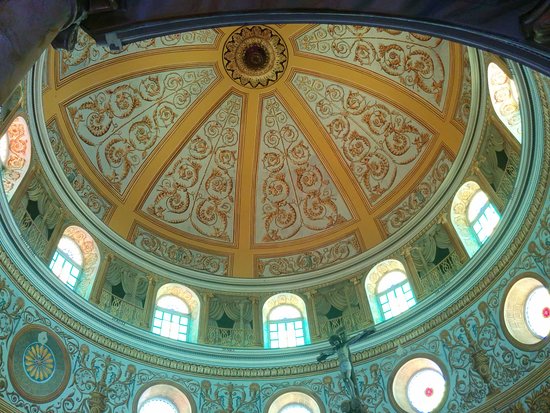
The decoration inside the dome is quite ornate.
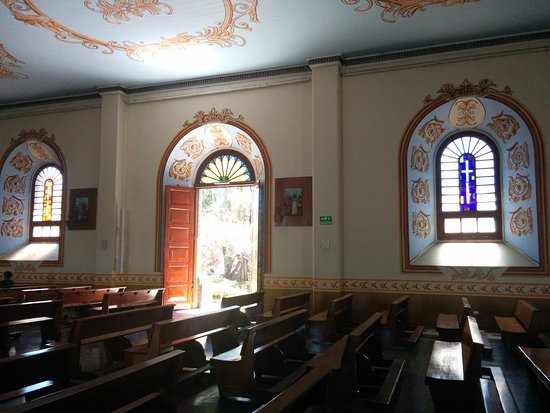
But the rest of the interior of the church is fairly simple and open.
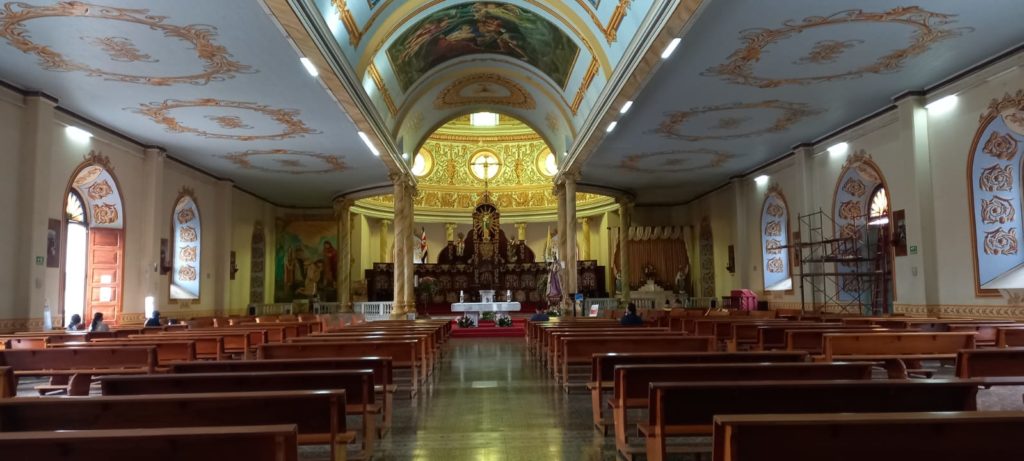
Unlike most European cathedrals, the ceiling is low and the nave is wide.
The ceiling is decorated with scenes from the gospels.
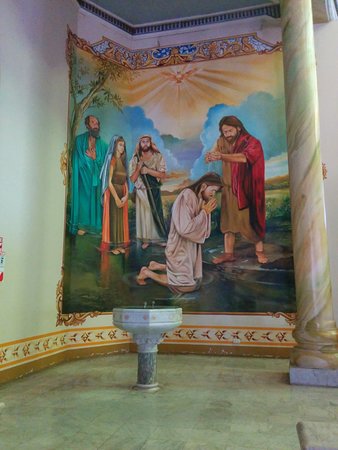
Other beautiful paintings adorn the interior of the building.
Manicured gardens surround the cathedral, which is just across from Alajuela Central Park, more formally known as Tomas Guardia Central Park.
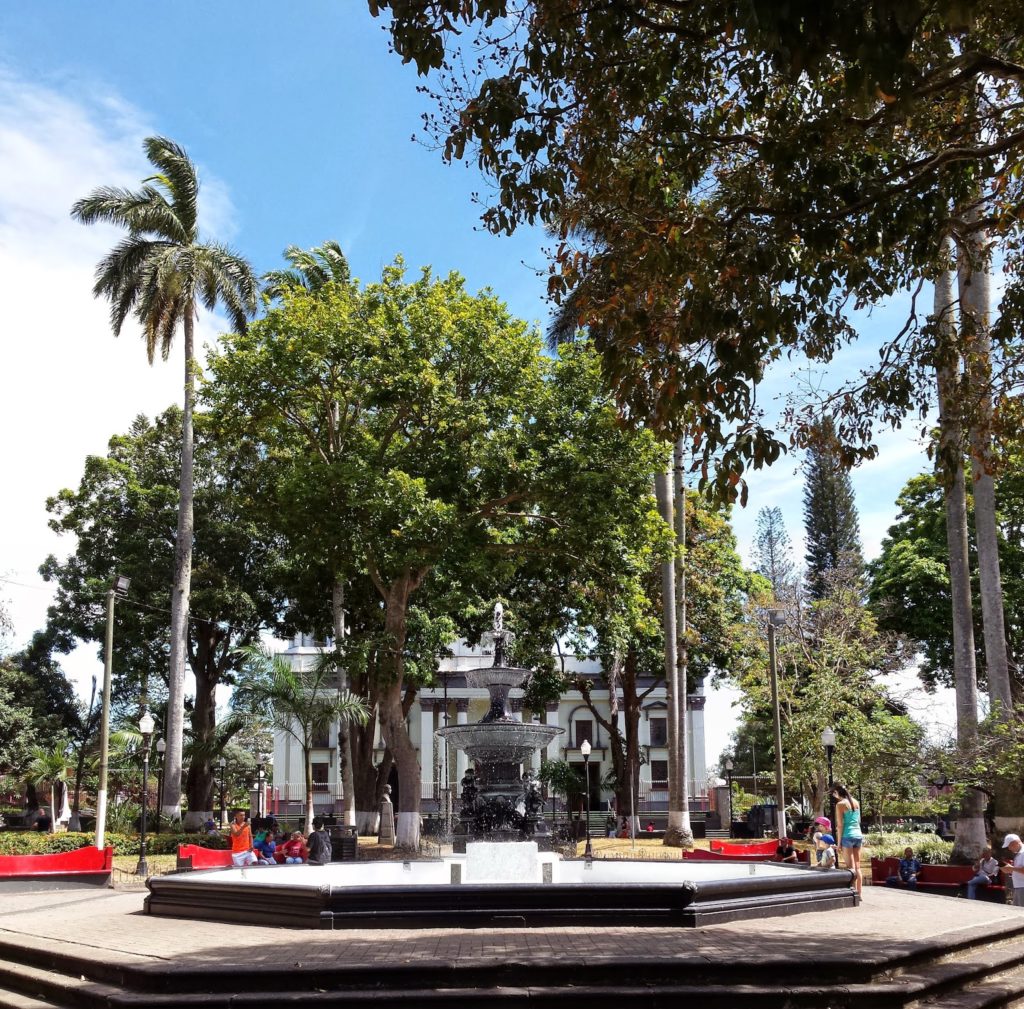
In the park are benches, fountains, walking paths, and lovely views of the cathedral. (See it in the background?) The park is a popular place for community gatherings. Mango trees grow throughout the park, but during mango season those enjoying the park have to watch out for falling fruit.
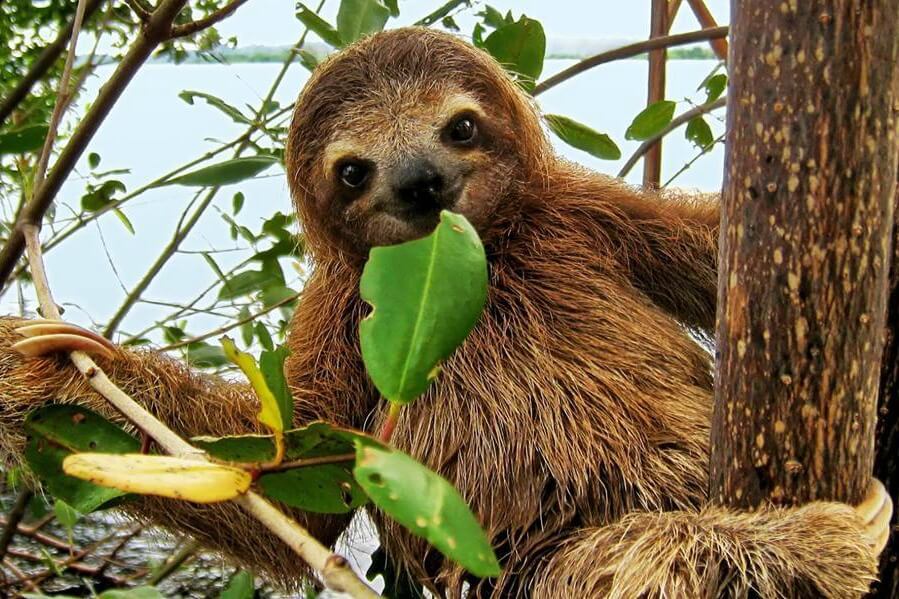
Rumor has it that a family of sloths live in the tops of the mango trees in Central Park! Sightings are rare, but it has been suggested that they might just be responsible for some of those falling Central Park mangos. Hmmm….
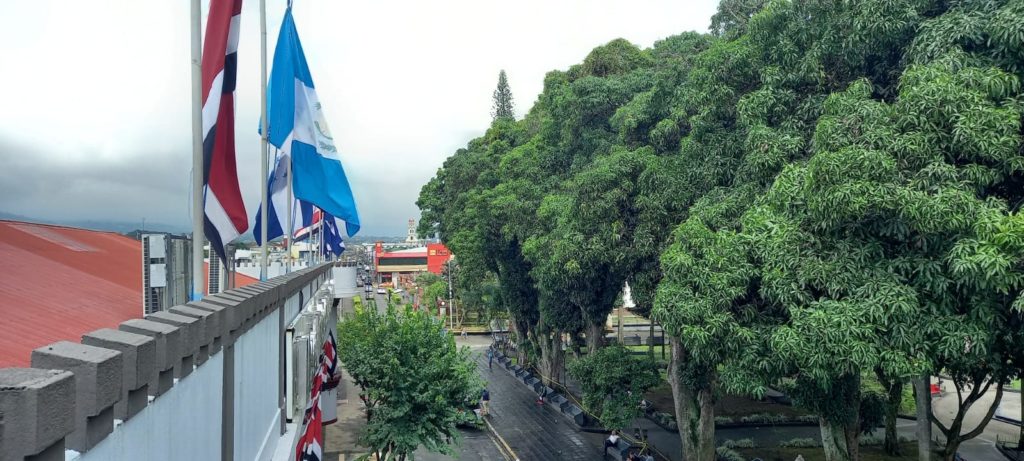
On one side of Alajuela Central Park is the old fort. Originally it was an army garrison built to protect the local farming community. But in 1948, when the Costa Rican army was abolished, the old fort was turned into a jail. Today it houses the Juan Santamaria Historical Cultural Museum.
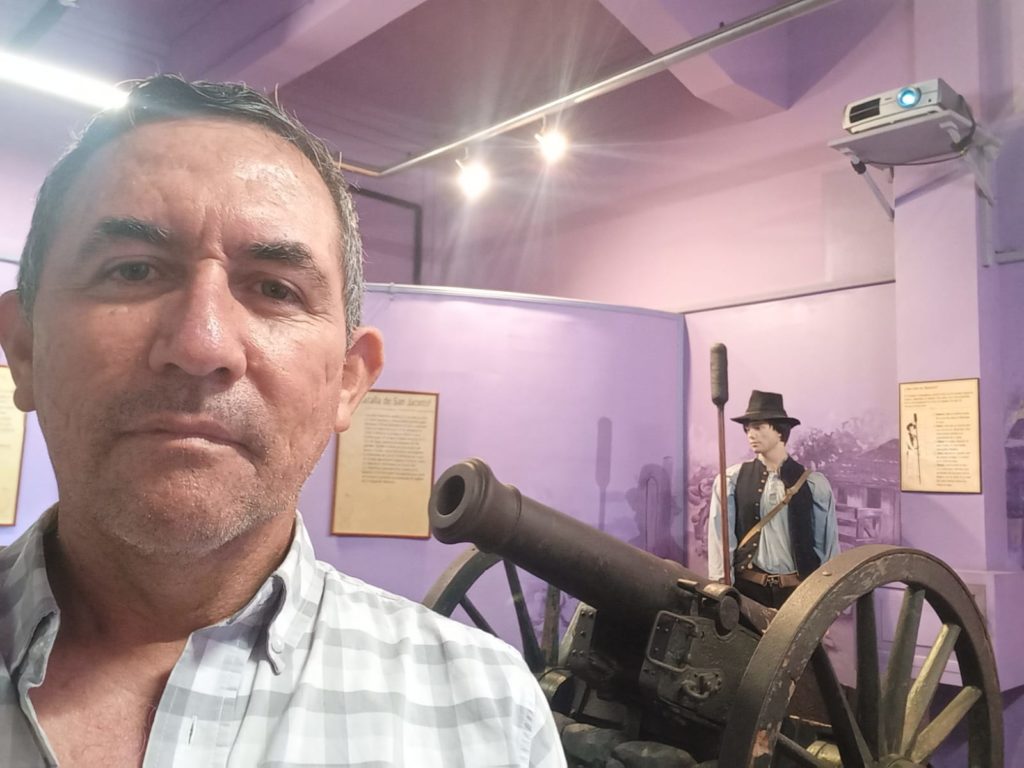
Fr. Miguel, Ignacio, and Eduardo spent part of the day at the museum, learning about the history of Costa Rica.
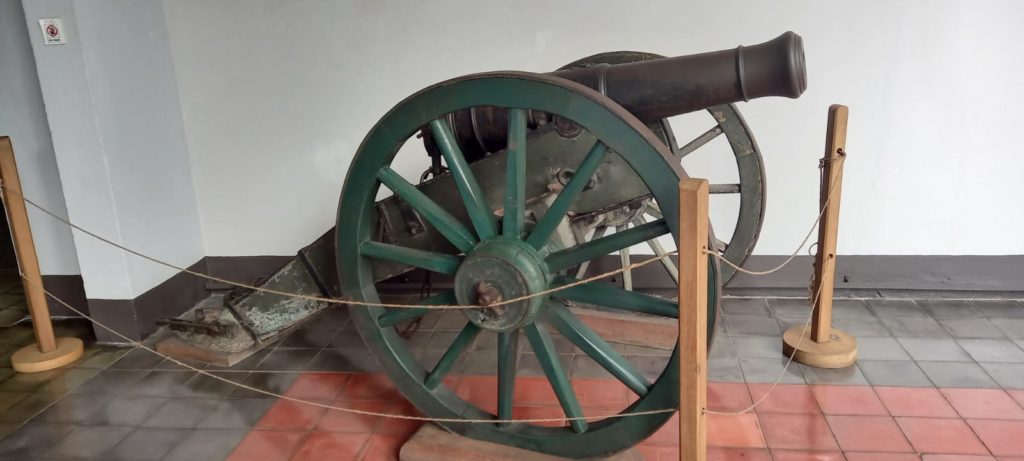
In addition to exhibits on military history, the museum collections also hold art and antiques, and document Costa Rica’s cultural changes from pre-Columbian times up to the present day.
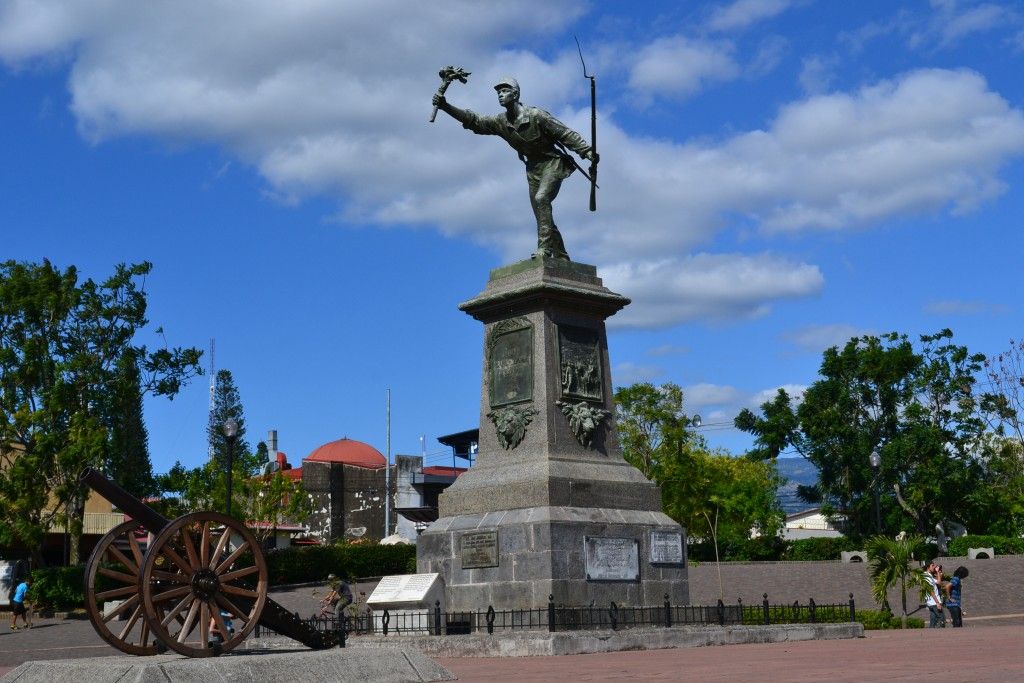
The museum, which serves as Costa Rica’s official repository of the nation’s cultural heritage, was founded in 1974 to honor Juan Santamaria, a national hero who lost his life during the Filibuster War in 1856.
Alajuela is Juan Santamaria’s birthplace, so it seemed an appropriate place to honor this brave young man. Santamaria was a drummer in the army of Costa Rica when William Walker, a U.S. citizen, having already invaded Nicaragua, wanted to stake a claim for Costa Rica and set up a private slave state.
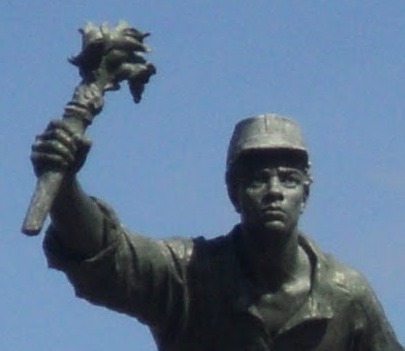
During the Second Battle of Rivas on 11 April 1856, Walker’s forces commanded an advantageous firing position and the Costa Rican army was unable to dislodge them. Santamaria, a poor laborer and illegitimate son of a single mother, volunteered to attempt setting fire to their position on the condition that, if anything happened to him, someone would take care of his mother for the rest of her life. Santamaria was mortally wounded in the attempt but, before his death, he managed to set the fire that burned Walker and his men out of their stronghold. Walker was eventually captured by the government of Honduras and was executed there in 1860. Santamaria became a hero and is honored with a national holiday throughout Costa Rica every year on 11 April.
Today, Costa Rica is one of the few democracies in the world to operate without a standing army. Every election since the 44 day Costa Rican Civil War in 1948 has been peaceful.
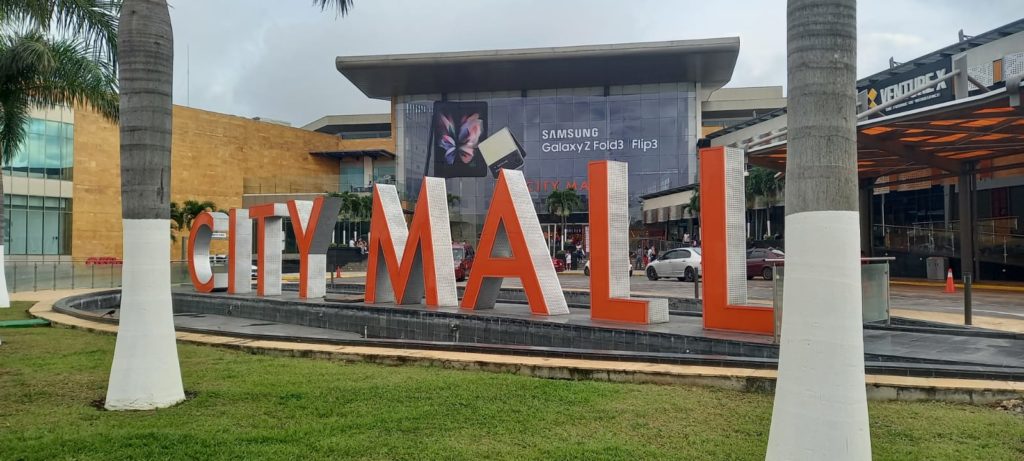
After a full day of seeing the sights in Alajuela, the team was hungry. Eduardo had a particular craving…for Taco Bell!!! Fortunately, in Alajuela, it was no problem to satisfy Eduardo’s appetite. Opened in 2015, City Mall is the largest mall in Central America housing some 300 stores. The mall has three floors, and even has a carousel and Ferris wheel on the top floor!
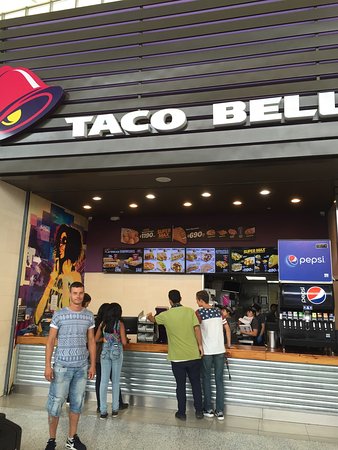
Eduardo was so excited to find the Taco Bell, that he forgot to take a picture. So I “borrowed” one from Google. ? (Yes, this is actually the Taco Bell in City Mall in Alajuela!)
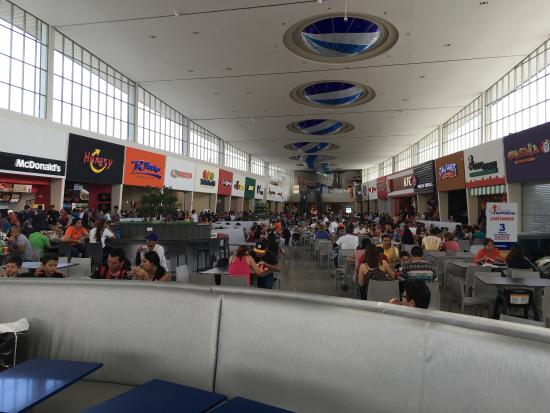
Meanwhile, Fr. Miguel and Ignacio had to choose among WAY too many options for their dinner. They both settled on KFC…and forgot to take pictures. Oh, well… There’s the KFC, and the Taco Bell, over on the right. Thanks again to Google images. ?
The team plans to resume their trek, picking up their itinerary where they left off, after Fr. Miguel’s relatives take them back north to the border. Stay tuned for more updates, coming soon….
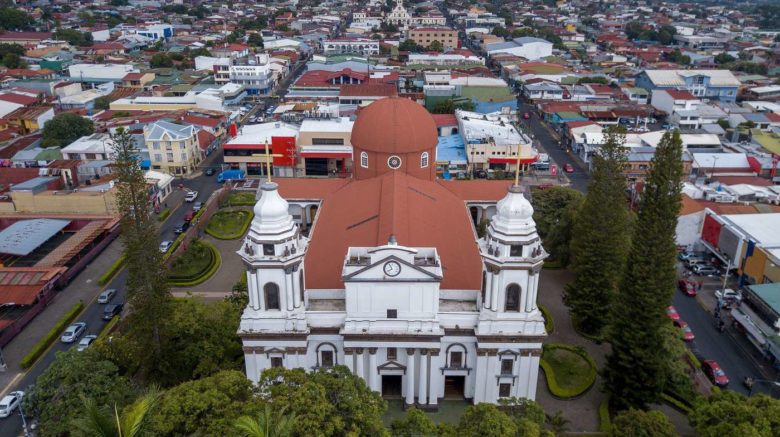
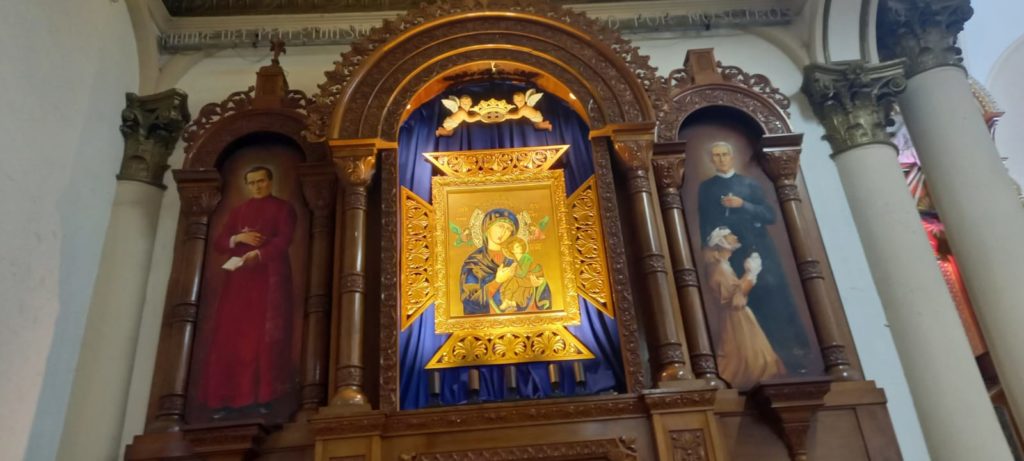
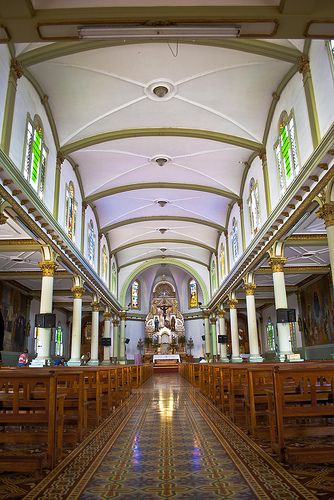
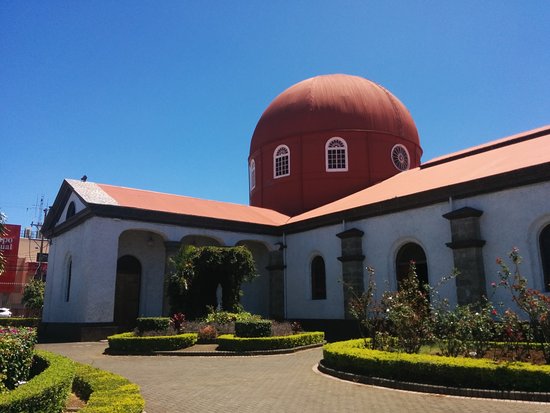
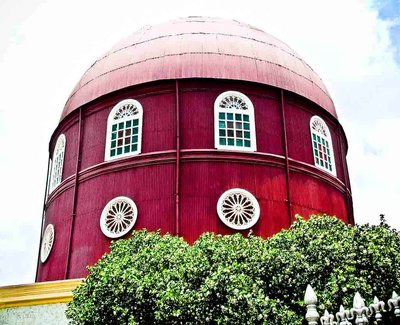
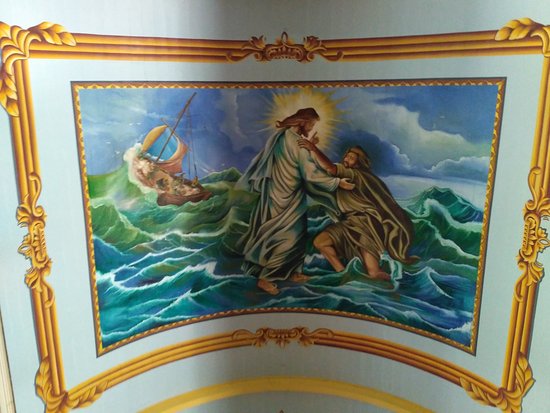
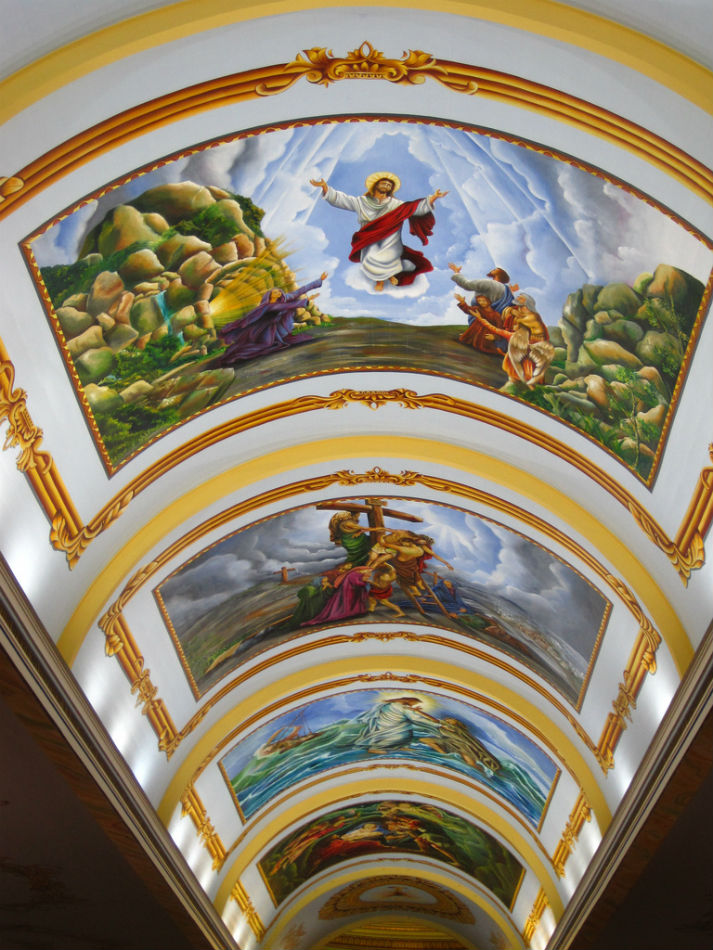
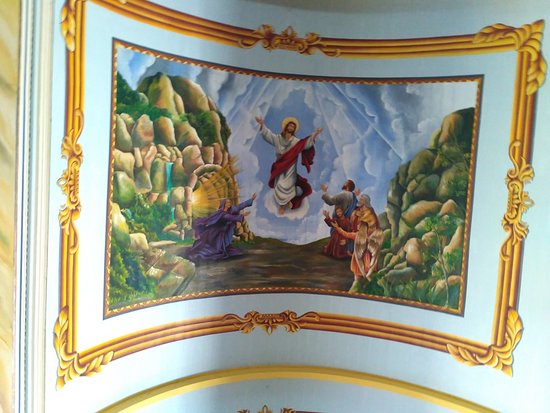
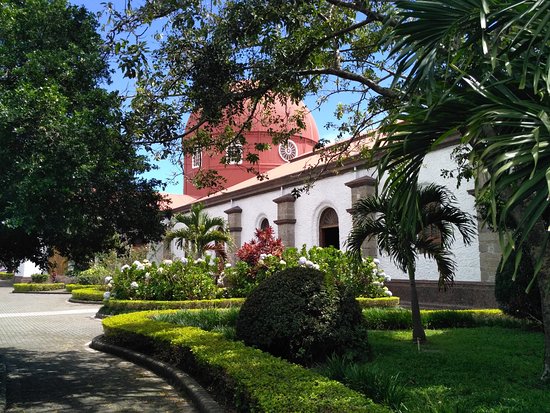
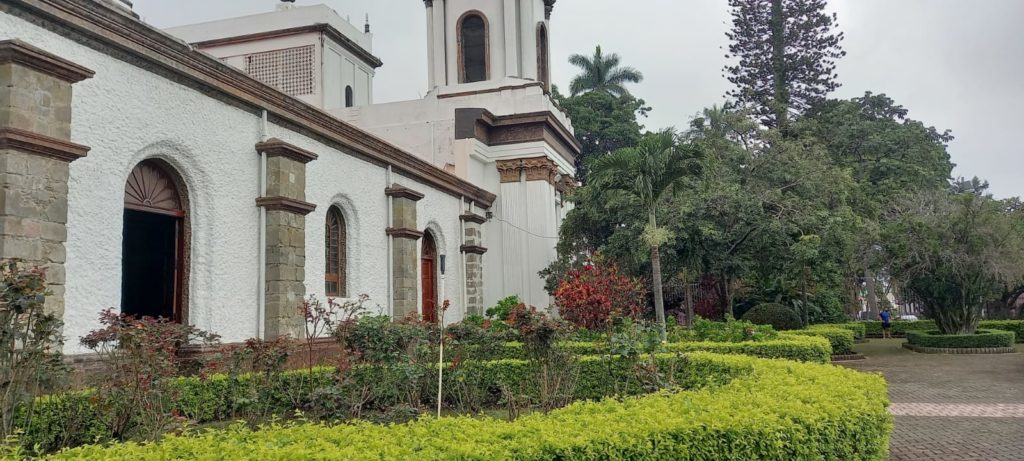
Thanks for the update. Blessings and prayers